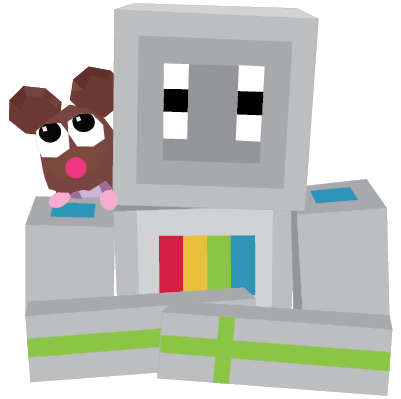Building, Coding, and Escaping Zomars: Learning with the Piper Make Robotics Expedition Set
By Shree Bose and Kris Rockwell
There’s something kind of magical about watching a group of kids build something with their own hands—and then realize that it actually works. That moment when their eyes light up because the robot moved the way they told it to, or the game controller they assembled starts communicating with another piece of hardware? That’s the moment real learning happens, and those moments are what inspire us here at Piper.
We saw a lot of those moments when we started testing out our newest kit, the Piper Make Robotics Expedition. The kit comes with everything students need to build two robots—a Walker, a quadruped robot which trots around in a manner reminiscent of your favorite dog, and a Rover, a rolling vehicle like the cars and trucks you see on the street every day. But while seeing these robots walk or roll around is exciting, it’s when students start taking it up a notch – when they build their very own Game Controller and code it to make their robots move – that sparks an unique “aha” moment that you can only get with Piper. When kids get to see multiple pieces of hardware they’ve built from scratch working together, it changes something. They go from seeing systems of technology as mysterious to realizing, “Hey—I made this happen.”
That kind of thinking is a big deal. In school, subjects are often taught in silos: science in one class, coding in another, maybe some robotics if you’re lucky. But the real world doesn’t work that way. Real-world tech is messy and interconnected. Helping kids learn to think across systems—hardware, software, design—isn’t just helpful; it’s essential if we want to prepare them for future careers where collaboration and interdisciplinary thinking are the norm.
What’s more, all of this happens within a storyline that makes the learning feel like an adventure. The Robotics Expedition isn’t just an exercise in assembling and coding technology—it’s a narrative involving our heroes Piperbot, a sentient robot from Earth, and Pip, his mouse friend on Mars. Kids are a part of the adventure as Piperbot and Pip design the Walker to compete in a Mars Pet Showcase in the virtual world as they build it in the real world. But when the judges (and a crew of Mars Zombies—aka Zomars) realize the pet isn’t real, things take a wild turn, and our heroes must escape using the Rover. Every mission in the kit connects to part of that story, giving students a reason to care about what they’re building—and a reason to troubleshoot when things go wrong.
We also recognize that those magical moments of discovery need the right environment— which is often your classroom. To support educators, we’ve created a full set of teacher resources, including a turnkey slideshow and Educator Guides for each of the 9 core missions. Whether you’re a STEM expert or just starting out, the goal is to make it easy to bring this experience to life in any classroom.
At the end of the day, the Robotics Expedition is more than just a kit. It’s a chance for kids to explore how technology works, how stories give meaning to what we build, how powerful it feels to bring all the pieces together with their own hands, and to build the foundational skills for the jobs of tomorrow. We’re excited for you to join us on this journey.
About the Authors
Dr. Shree Bose
Shree is an MD / PhD, Harvard graduate, winner of the inaugural Google Global Science Fair, and a passionate STEM advocate. She cofounded Piper to inspire the next generation of innovators. Learn more at ShreeBose.com.
Kris Rockwell
Kris has been involved in the learning industry for over twenty years working in gaming, simulation and learning standards. Outside of his work in learning, Kris has been working in the nonprofit world supporting organizations that focus on learning, equality, entrepreneurship and conservation.


